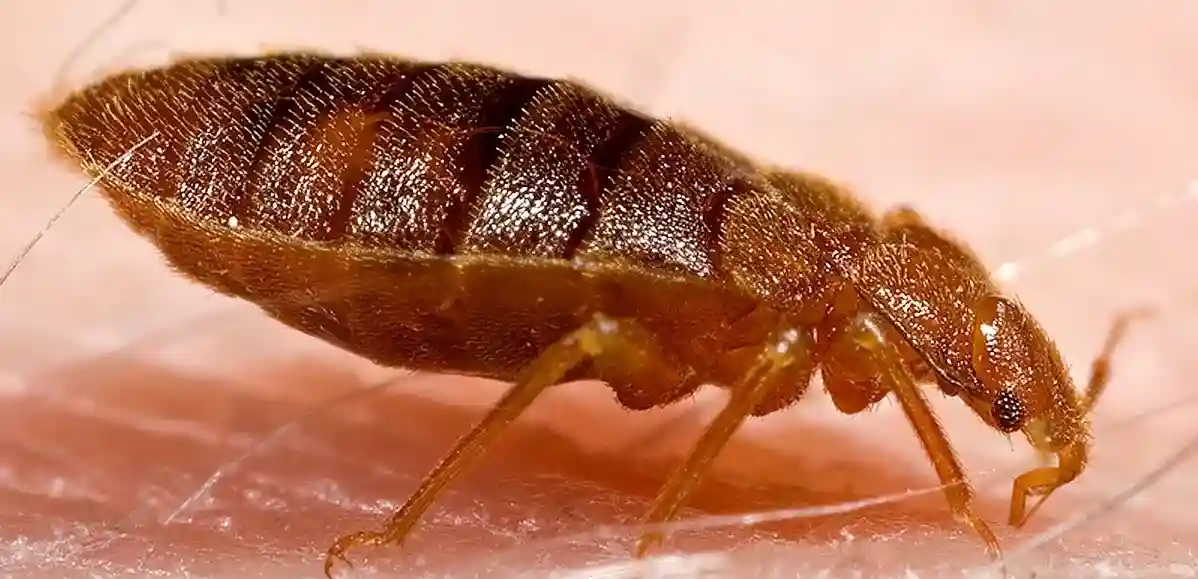How to Handle Carpet Beetle Larvae Near Cat’s Food
It might be upsetting to discover little, unwelcome bugs like carpet beetle larvae next to your cat’s food. These insects not only look bad but also might cause health problems. Commonly found in houses, carpet beetles are drawn to natural fibres, pet food, and stored grains, hence your cat’s dining area becomes an interesting place for them.
Understanding how to handle carpet beetle larvae near cat’s food is crucial because, Although carpet beetle larvae do not directly endanger cats, their health and comfort depend on their diet free of pests.
Including safe cleaning methods, storage practices, and pest management advice, in this we article will provide possible ways to how to Handle Carpet Beetle Larvae Near Cat’s Food. Let’s look at ways you may guard your pet and fight against pests!
Why Carpet Beetles are Concern for Pet Owners
Little oval-shaped bugs coated in bristle-like bristles are carpet beetle larvae. Often discovered inside furniture, in pantries, or next to pet food, they attract towards organic things such cat food and pet bedding. These indicators point to possible carpet beetle larvae close to your cat’s food:
- Visible larvae: Little brown, bristly worms called visible larvae appear in and around the eating area for your pet.
- Shedding: Larvae leave behind tiny, thin brown shells or cast-off skins.
- Damaged packaging: They could chew through food containers to get cat food.
If you see these symptoms, you must quickly resolve the issue.
2. Why Carpet Beetle Larvae Are Attracted to Cat Food
Scroungers, carpet beetle larvae search for nutrient-dense organic materials—including dry cat food. Their diet consists of grains, sources of proteins, and sometimes even pet food’s oils. Cat food runs more risk attracting these pests if it is kept in an open container or poorly sealed bag.
Regarding storage and pest control, pet food should be handled same as human food. To prevent carpet beetles and other pests, the feeding area must be kept clean, airtight storage must be used, and regular inspections are very crucial.
My Experience with Carpet Beetles in My Cat’s Feeding Area
I was a bit surprised when I first saw little larvae surrounding the food dish of my cat! Originally unsure of what they were, a short internet search turned up larvae of carpet beetles I had no idea that bugs could easily chew through a standard plastic container, which I had just been placing his food in to keep it convenient. Tossing everything out came first, and I did it, but I wanted to make sure this never happened once again.
I started looking for pet-safe medicines, which guided me towards some natural cures. Following thorough cleaning of the whole area, I moved to a metal container with airtight seal for Mittens’ food. Though it required some more work, I also began nightly cleaning the feeding area. Two weeks later, I saw that the carpet beetles had vanished; fortunately, they have not returned. Like this, I handle the beetle larvae, which come near my cat’s food.
Looking back, there was a little learning curve, but I’m glad I could manage it organically without using strong chemicals that would impact Mittens. It showed me that keeping bugs out of pet food mostly depends on a little additional attention towards storage and hygiene.
3. Proven Steps on How to Handle Carpet Beetle Larvae Near Cat’s Food
When handling bugs near your cat’s food, give safety a priority. Here’s a methodical way for eradicating carpet beetle larvae from the space devoid of strong pesticides that can endanger your cat:
1: Remove Cat Food
- Dispose of any infested food: If you discover larvae or castings in your cat’s food, throw it away right away.
- Clean feeding bowls: Daily washing dishes with warm, soapy water helps to eliminate any possible larvae or eggs that could have found their way onto the surface.
2: Vacuum Thoroughly
- Vacuum around the feeding area: Carpet beetle larvae thrive in hidden spots. Clean inside appliances, baseboards, even inside cupboards close to the feeding area with a vacuum.
- Dispose of the vacuum bag: To avoid re-infestation, make sure you dump the canister outdoors right away and discard the hoover bag.
3: Wipe Surfaces
- Pet-safe cleaning: Dust cupboards and flooring close to your cat’s food using a vinegar and water combo. Natural repellant for carpet beetle larvae and other pests is vinegar.
- Rinse thoroughly: Make sure no cleaning residue remains as strong smells might deter cats from eating or potentially cause health risks.
4. Preventative Measures: How to Keep Carpet Beetles Away from Your Cat’s Food Area
Invest in Airtight Storage
- Use airtight containers: sealed containers to prevent larvae from getting to it. Avoid leaving open bags out in the feeding area.
- Rotate food stock: Don’t buy more food than your cat can consume in a reasonable period. This reduces the time for pests to find and infest stored food.
Clean Feeding Area Regularly
- Daily cleaning: Every day cleaning helps to avoid any food particle accumulation that can attract bugs by wiping off the feeding area.
- Weekly deep cleaning: Move the feeding arrangement and at least once a week clean beneath and around it. Effective insect control depends much on regular cleaning schedules.
Inspect New Bags of Food
- Check for contamination: Occasionally, pests can already be present in new bags of pet food. When you bring home new food, inspect it before pouring it into storage containers.
5. Pet-Safe Pest Control Solutions for Carpet Beetle Infestations
If you discover a carpet beetle invasion, think about using natural, safe pest control solutions free of damage to your cat. These are some options:
Natural Repellents
- Diatomaceous Earth (Food Grade): Dust food-grade diatomaceous earth all around your cat’s food station. While harmful to insects, this powder is benign to cats.
- Essential oils: Some essential oils such as peppermint or eucalyptus, help drive off carpet beetles. Just use them sparingly; keep them away from your cat’s food and water; certain essential oils are poisonous to animals.
Pheromone Traps
- Carpet beetle traps: Effective for drawing in and catching adult carpet beetles are fragrance traps. To lower the adult beetle population and hence aid to control larvae, place these traps in out-of-reach regions close to the feeding place.
6. Safe Cleaning Practices to Prevent Future Infestations
Regular Vacuuming
- Frequent vacuuming: Often hiding in carpets, leather furniture, and cracks, carpet beetle larvae Any eggs or larvae that may have got inside can be removed by regular vacuuming.
- Pay special attention to corners and crevices: Focus on corners and cracks: Often settling in secret locations are carpet beetles. Use attachments to get deep into cracks and corners around the feeding area.
Steam Cleaning
- Pet-safe steam cleaning: High-temperature steam cleaning destroys carpet beetle larvae without chemicals, thus safe for places your pet uses.
Declutter and Organize
- Minimize hiding spots: Carpet beetles love clutter. Keep the area around your cat’s food organized and free of extra storage boxes or piles of items where larvae might hide.
7. Proper Storage of Pet Food to Handle Carpet Beetle Infestations
Choose Appropriate Storage
- Use metal or thick plastic containers: Carpet beetles can chew through thin plastic bags or boxes. Airtight metal or thick plastic containers are ideal for keeping them out.
- Avoid overstocking: Storing excess pet food increases the risk of pest infestation. Aim to store only what your cat needs for a few weeks.
Check Expiration Dates
- Rotate food supplies: Rotating stock and looking at expiry dates assist to reduce waste and maintain product freshness.
8. Recognizing Signs of Carpet Beetle Infestation in Your Home
It is very important to know how to spot an infection early. Here are few typical signs of carpet beetles in your house:
- Sighting adult beetles near windows: Light attracts these insects. Small insects seen close to windows might point to a more serious problem.
- Clothes or fabric damage: Carpet beetle larvae frequently feed on natural fibres, hence ruined clothing, carpets, or upholstery may indicate an infestation.
- Presence of larvae: Seeing larvae, particularly in places where you keep food, it’s indicate that time for action.
9. When to Call a Professional Exterminator
Although many infestations may be treated with natural medicines and thorough cleaning, serious instances might need for expert assistance. If you find constant issues even with regular cleaning and preventive actions, think about seeing a pest control professional who can safely evaluate and treat the infestation.
10. Tips for Keeping Your Cat’s Food Area Clean and Pest-Free
Keeping pests like carpet beetles out of your cat’s eating area depends on maintaining cleanliness there. Here are some outstanding ideas to give thought:
- Wipe food containers after each use to prevent crumbs.
- Regularly wash food and water bowls to keep pests away.
- Empty and clean storage containers between uses to ensure no pest eggs remain inside.
11. Safe Products and Methods to Use When Cleaning Near Your Cat’s Food
Always use safe, non-toxic cleaning chemicals while scrubbing spaces close to your pet’s food. Here are some options
- Pet-safe vinegar and water solutions: Solutions suitable for pets that include vinegar and water help clean surfaces and discourage bugs.
- Food-grade diatomaceous earth: Food-grade diatomaceous earth: safe for animals but not very good for bug repellance.
- Warm water and mild dish soap: For everyday cleaning, warm water mixed with a light dish soap is enough and safe for cats.
Conclusion: Keeping Your Cat’s Food Safe from Carpet Beetles
The health and well-being of your cat depend on you acting to prevent carpet beetle larvae from near food sources. Your animal buddy will have a clean and secure feeding space if you regularly clean, wisely store food, and use safe pest control measures.
Let’s keep clean houses, healthy pets, and food free of pests for our cat! Please leave comments below with any other ideas or if you have seen carpet bugs. See our other articles, “Best Diet Tips for Cats with Overactive Thyroid” or “Essential Nutrients for Feline Health: Are You Feeding Your Cat Right?” for further cat care guidance. These easy, quick actions can help you control carpet beetle larvae and provide a safe, clean surroundings for your cat free from strong chemicals!

